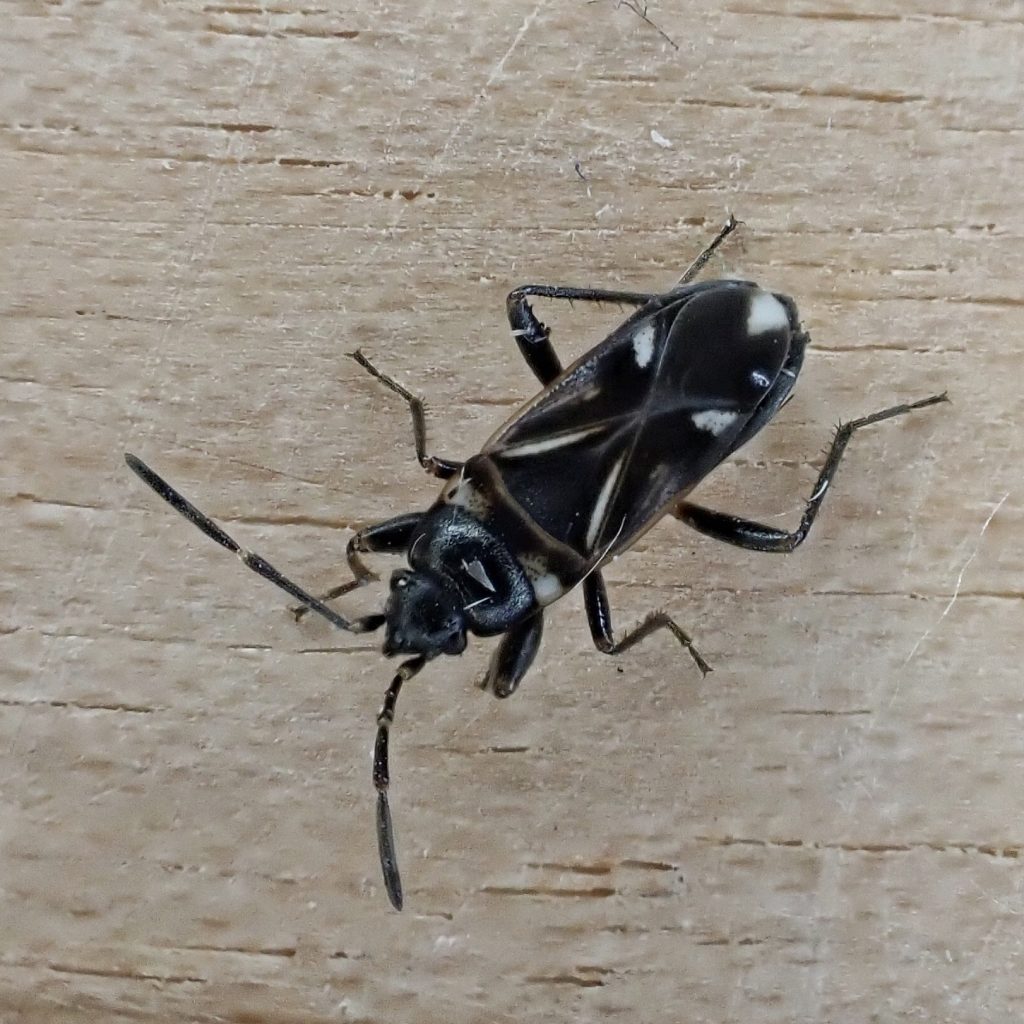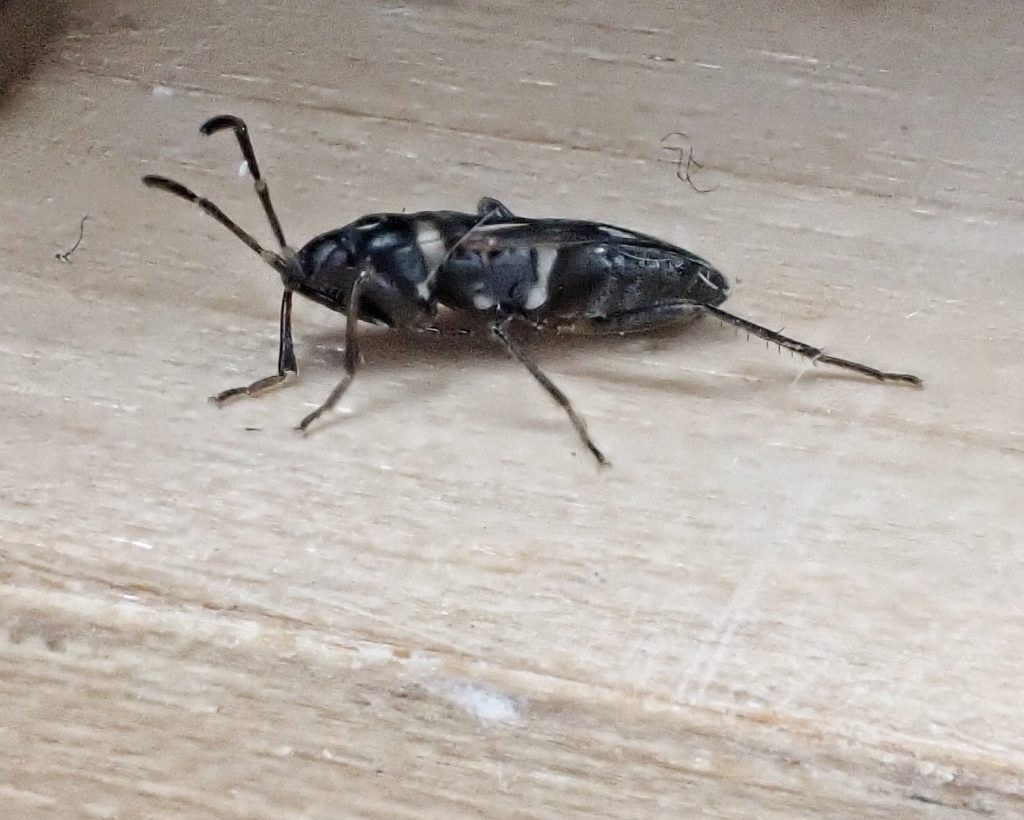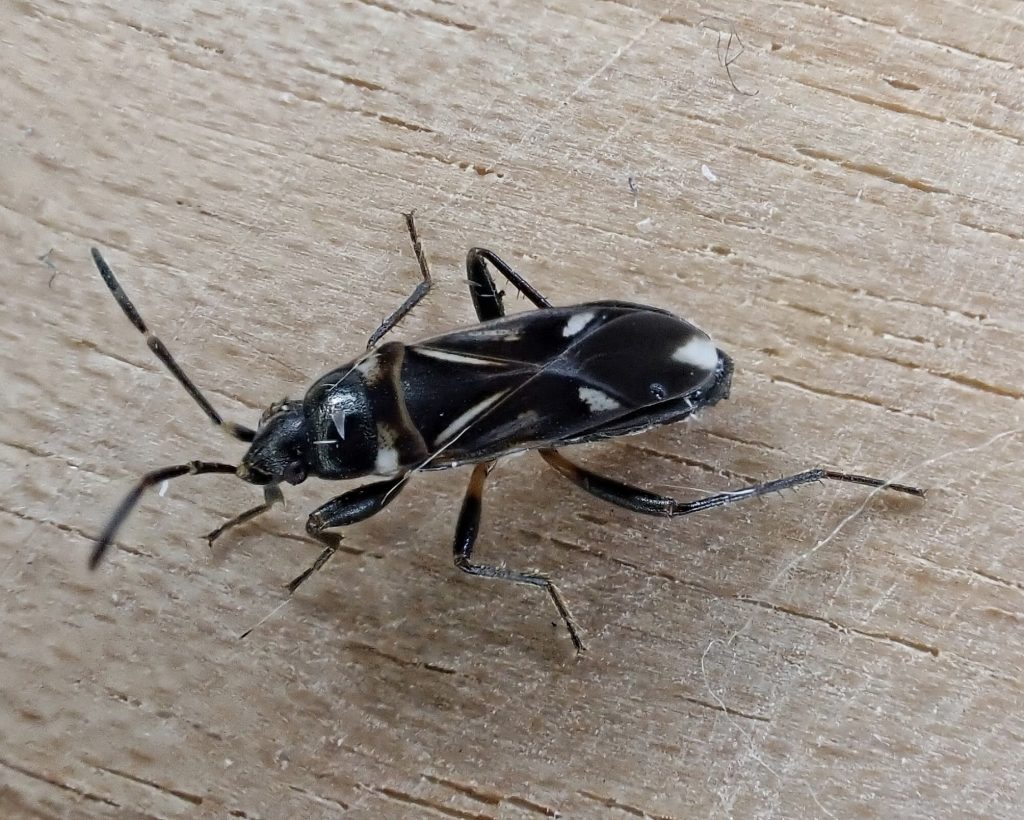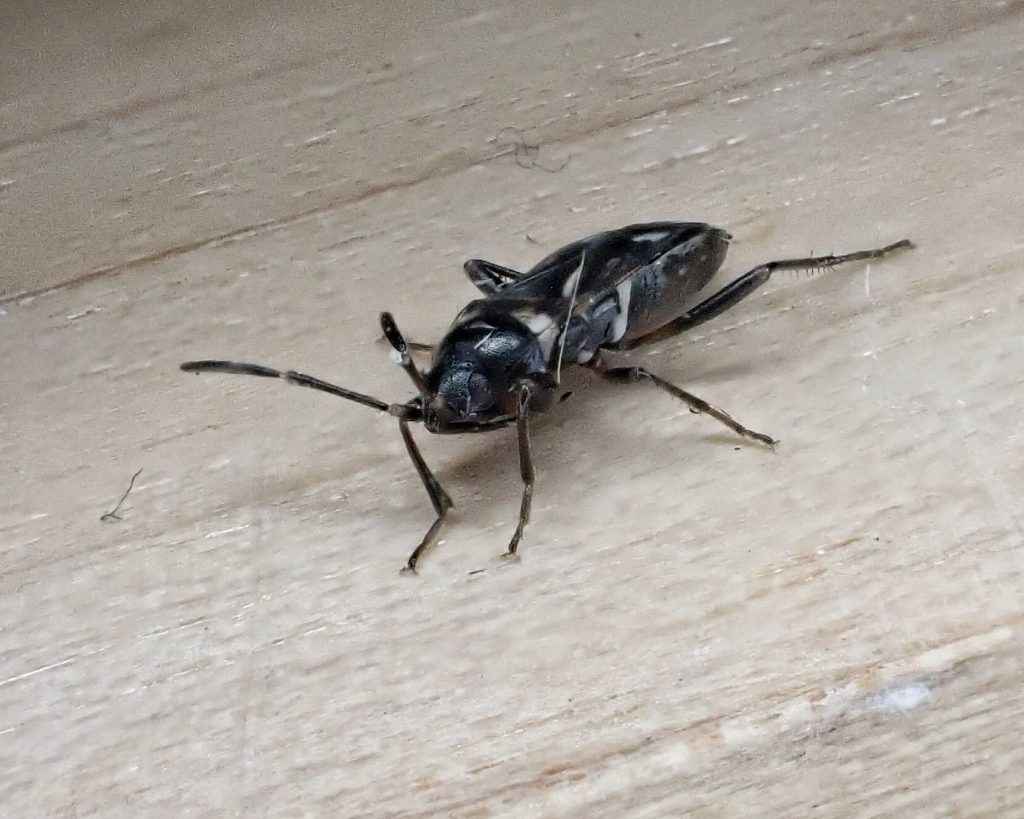
This small, handsome member of the family Rhyparochromidae (dirt-colored seed bugs) is apparently sometimes called a tuxedo bug, which seems appropriate with the mostly black and white form I found crawling atop our mailbox, but less so with the more common, more brown version I see in most photos of this species. They are native to Europe, and first appeared in North America in Utah, in 1999. “Populations of the seed-bugs invade homes and other buildings seeking over-wintering shelter and homeowner complaints of high numbers of the bugs in the spring and fall have increased steadily from many areas since 2002. Crop and garden problems from the seed-bugs have not been reported, and based on the European literature, they are not expected to become significant agricultural pests in the region.” https://ir.library.oregonstate.edu/downloads/db78tf118

Description–Raglius alboacuminatus has spiny hind femora and a white spot on the top of each wing membrane; “Adults are about 5–6 mm long, with dark-brown to black coloration, white markings on the posterior pronotal lobe, anterior half of the corium, and three conspicuous white spots—one on the apex of each corium, and one on the apex of hemelytral membrane” https://journal.entsocbc.ca/index.php/journal/article/download/940/992
Similar species– Rhyparochromus vulgaris lacks large white spots on the wing membranes, lacks spines on the hind femora, and has much more white on the rear of the pronotum; Xanthochilus saturnius has tan border on the whole lateral margin of the pronotum; Eremochoris sp. have light colored spots at the base of the visible dark membrane.

Habitat– “…on ground and vegetation; hibernates under bark(5); mainly ruderal habitats (wastegrounds, roadsides, woodland clearings)(1); reported invading homes and old fields in huge numbers in NA” Species Raglius alboacuminatus – BugGuide.Net
Range– “…native to Europe & the Mediterranean, recently introduced to NA (BC-CA-UT)” Species Raglius alboacuminatus – BugGuide.Net
“It was first detected in North America, in Utah, in 1999, and it is present in California, Oregon, and Washington (Henry 2004; Bechinski and Merickel 2007)” https://journal.entsocbc.ca/index.php/journal/article/download/940/992
Eats– “…seeds of Lamiaceae and other plants(5); in the UK, the main foodplant is black horehound (Ballota nigra)” Species Raglius alboacuminatus – BugGuide.Net
Eaten by– Presumably by any insectivore which can catch and subdue them

Adults active– Year around
Life cycle– “There is one generation per year in the United States (Bechinski and Merickel 2007), but there are two in England and three in Russia (Henry 2004; Southwood and Leston 1959). Raglius alboacuminatus overwinters as adult. Overwintered adults lay eggs in the soil or ground litter in early spring. Nymphs feed on developing seeds of plants in the mint family (Lamiaceae).” https://journal.entsocbc.ca/inde.php/journal/article/download/940/992
Etymology of names– I can find nothing at all on the etymology of the genus name Raglius. The specific epithet alboacuminatus is from the Latin words for ‘white’ and ‘sharpened/pointed’, which may refer to some part of the white markings, but I can find nothing that explains the reference.

Species Raglius alboacuminatus – BugGuide.Net
(Lygaeidae) Raglius alboacuminatus
https://ir.library.oregonstate.edu/downloads/db78tf118
https://journal.entsocbc.ca/index.php/journal/article/download/940/992

Does it bite people?
I suppose it could jab someone with its proboscis if it was threatened, Monty, but I’ve never heard of that and it is certainly not medically significant.